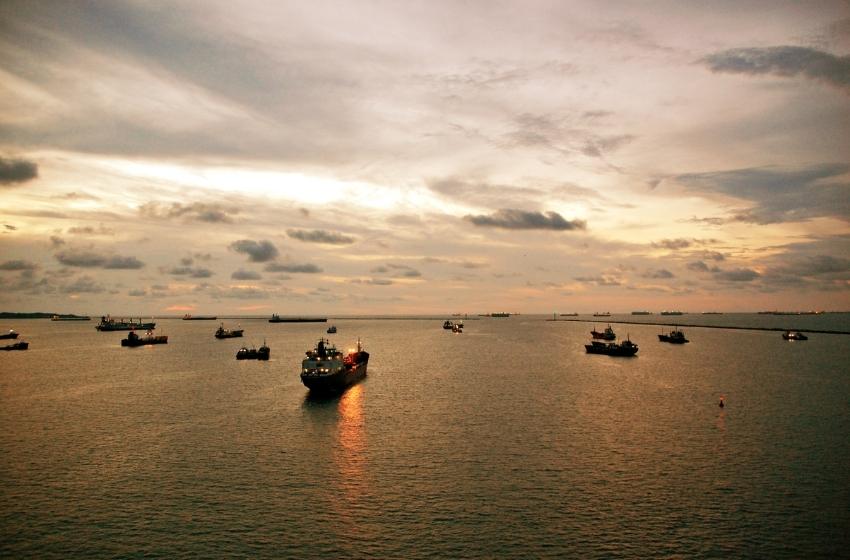The sound of the sea is familiar to all of us - the tender whisper of waves, sometimes followed by a crashing storm. Because sea depths are associated with silence, many presume that marine dwellers are themselves soundless. But with the use of a hydrophone – a device for listening to underwater sounds - it becomes clear that the catchphrase ‘silent as a fish’ is mistaken. It turned out that in fact, (some) fish are more talkative and clamorous than birds! After years of study, there is now a sizable knowledge base of the vocal stylings of marine dwellers, and they are very diverse - clicks, whistles, squeaks, and creaks, which can be of different pitches, volumes, and rhythms.
Of course, the most complicated systems of marine sound communication belong not to fish but to cetaceans - whales and dolphins. Cetaceans make noises in a range much wider than human ears are able to perceive. These noises fluctuate from infrasound to ultrasound and contain a lot of information. As scientists study the communication of cetaceans, the term ‘dialects’ is frequently used, because it was discovered that sound signals differ not only among species, but also among populations within a single species. Thus, the vocabulary and diction are not only inherited genetically, but also are transmitted from adults to juveniles, just as with human languages and dialects. In addition, toothed whales (the category that includes dolphins, porpoises, sperm whales, and beaked whales) use ultrasound for echolocation - i.e. high-pitched signals for spatial orientation and food searches. The toothed whales' perception of the world is based on images created thanks to echolocation. As such, an auditory picture of the world is instinctive to them.
Because of the centrality of sound in marine life, marine dwellers suffer from articifial, human-made sounds (e.g. the underwater background noise of ships' engines) even more than humans suffer from street and industrial noise. Take, say, a container ship, which is 300m long: it can produce a noise of about 190dB. Large tankers, 177dB; fishing trawlers, 156dB (by way of comparison, a jet engine is only about 150dB). As such, areas of heavy sea traffic are characterised by constant underwater noise - similar to city streets and highways. The worst thing from the perspective of marine life is that this noise is strongest within a frequency range of 20-300Hz, which is used by large baleen whales for communication. Though some marine dwellers adjust to constant noise, in the same way that people living in cities get used to ambient sounds, the effect is overall deleterious. The most dangerous sounds are so-called impulse sounds, when short signals of great power are created, which can frighten, deafen, and lead to contusions. For example, the air guns used for underwater seismic mineral exploration can create impulses louder than space rocket launch sounds. Signals of acoustic sonar - mid-range radar, exceeds the safe perception limits of cetaceans reaching 230dB. That is why the acoustic trauma to the middle ear suffered by cetaceans during military manoeuvers or seismic surveys may be one of the reasons for seemingly suicidal strandings. In addition to their pain and fear, the mechanism of auditory perception in cetaceans is damaged, decreasing their ability to orient by means of echolocation or to differentiate between shore and open water.

Active development of the shelf by humanity and coastal building also contributes to the noise pollution of the sea. During construction, the loudest impulse noises occur when pile-driving or dredging. Peak noise levels during these works significantly exceed the limits of safe perception for many fish species. Though some fish have adjusted to low-level background noise, powerful impulse discharge is something we should protect all marine animals from.
We came to appreciate the danger of anthropogenic underwater noises relatively recently. That is why the newest environmental documents of the EU, in particular the EU Marine Strategy Framework Directive, refer to anthropogenic noise as pollution along with ‘traditional’ chemical pollution of sea waters. European countries have begun to monitor sea noise constantly, and have developed measures for its decrease. In the Black Sea, water noise monitoring was carried out for the first time by EU-members Bulgaria and Romania, where since 2017-2018, the estimation of underwater noise level is included within the National Marine Environment Monitoring Program. Other Black Sea countries are now developing similar programmes; in the case of Ukraine and Georgia, these programmes were developed within the framework of the EMBLAS Project.
The publication was prepared with the financial support of the EU – UNDP project ‘Improving Environmental Monitoring in the Black Sea: Selected measures’ (EMBLAS-Plus). This publication was produced with the financial support of the European Union and UNDP. Its contents are the sole responsibility of the authors and do not necessarily reflect the views of the European Union or UNDP.
Authors: B. Aleksandrov, O. Adrianova, N. Atamas, V. Bolshakov, O. Bondarenko, I. Chernichko, V. Demchenko, S. Dyatlov, Y. Dykhanov, E. Dykyi, O. Garkusha, P. Gol’din, S. Hutornoy, V. Komorin, Y. Kvach, V. Mamaev, O. Manturova, O. Marushevska, A. Mikelyan, Yu. Mikhalev, G. Minicheva, I. Sinegub, T. Shiganova, J. Slobodnik, A. Snigiryova, M. Son, K. Vishnyakova, A. Zotov. Illustrator: I. Pustovar.






















